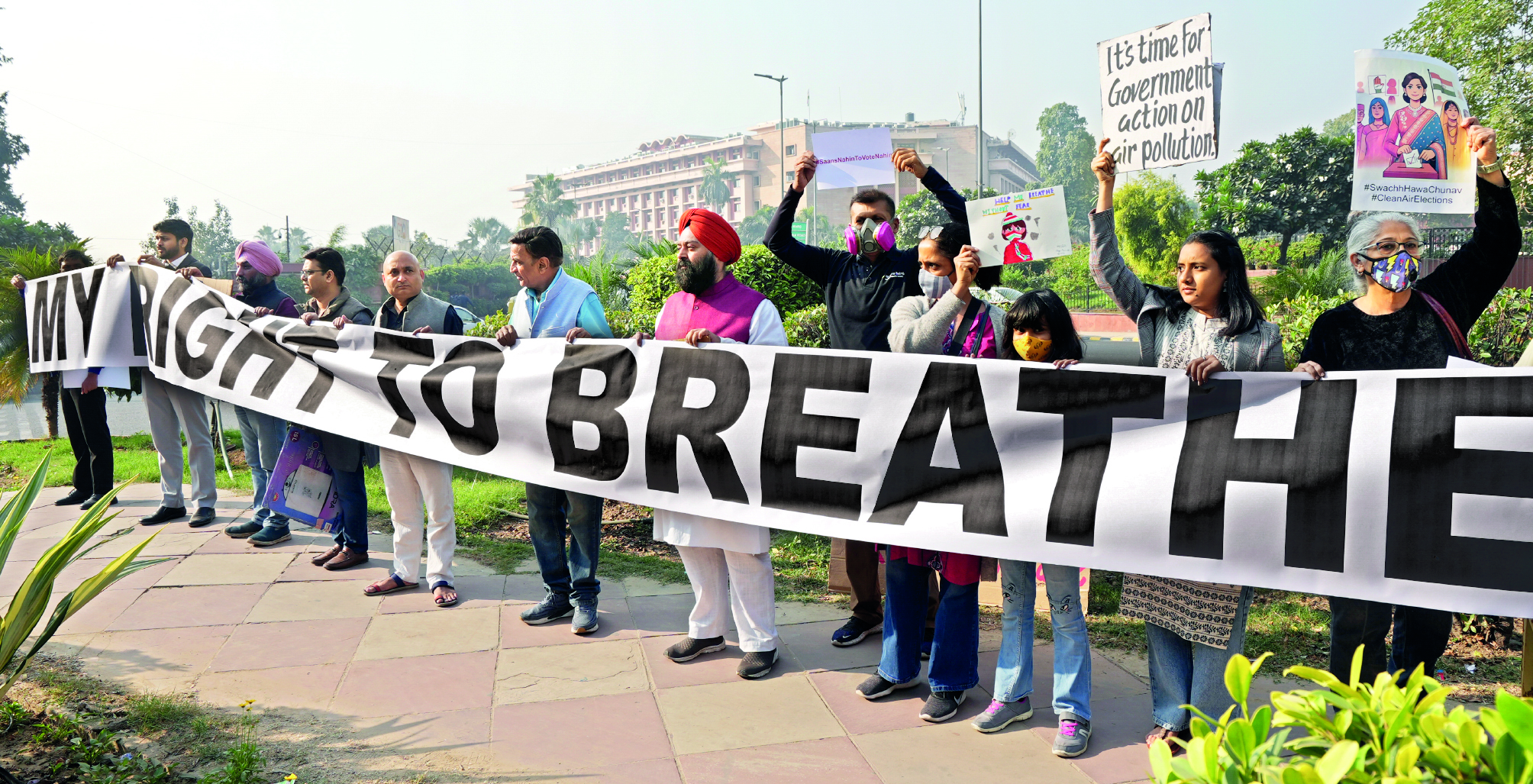AQI ‘very poor’ for 4th day; city records 2nd-coldest night of season

NEW DELHI: Delhi’s air quality remained in the “very poor” category for the fourth consecutive day on Wednesday, while the city recorded its second-coldest night of the season.
The minimum temperature dipped to 10.4 degrees Celsius, 0.1 notch above normal, according to the India Meteorological Department (IMD), which has also forecast a further drop to 9 degrees Celsius at night.
The coldest night of the season so far was recorded on November 21, when the temperature settled at 10.2 degrees Celsius. Delhi’s 24-hour average Air Quality Index (AQI) was recorded at 303 at 4 pm, a slight improvement from 343 the previous day, according to data from the Central Pollution Control Board (CPCB).
None of the 39 monitoring stations in the capital recorded the air quality in the “severe” category, similar to the trend observed on Tuesday.
Delhi’s air quality index (AQI) peaked at 419 on 20 November, with subsequent readings of 371, 393, 412, and 318 through Sunday. An AQI between 301 and 400 is classified as “very poor,” while levels above 400 are deemed “severe.”
Primary pollutants, PM2.5 and PM10, were recorded at 122 µg/m³ and 219 µg/m³ respectively on Wednesday, down from 143 µg/m³ and 325 µg/m³ on Tuesday. PM2.5 particles, capable of penetrating deep into the lungs, pose significant health risks.
The Centre’s Decision Support System (DSS) attributed 24.6 per cent of Wednesday’s pollution to vehicular emissions, with stubble burning contributing 5.8 per cent on Tuesday.
Experts at AIIMS-Delhi have urged people to maintain adequate vitamin D levels amidst high air pollution, which is reducing sunlight exposure—a key source of the nutrient. Dr Ravinder Goswami, professor in the Department of Endocrinology and Metabolism, advised moderate supplementation, such as 60,000 IU of cholecalciferol, during winter, under medical guidance. He cautioned against active vitamin D analogues, like calcitriol, which are for specific therapeutic uses and carry risks of toxicity if misused.
A departmental study found normal vitamin D levels (around 20 ng/ml) in outdoor workers like street vendors, traffic personnel, and gardeners due to sun exposure from 10 am to 2 pm. Conversely, 60-80 per cent of indoor workers were found to be deficient unless they took supplements. Dr Soma Saha highlighted that outdoor workers achieve sufficiency through routine exposure, but supplementation should focus on indoor workers or individuals predisposed to deficiency.



